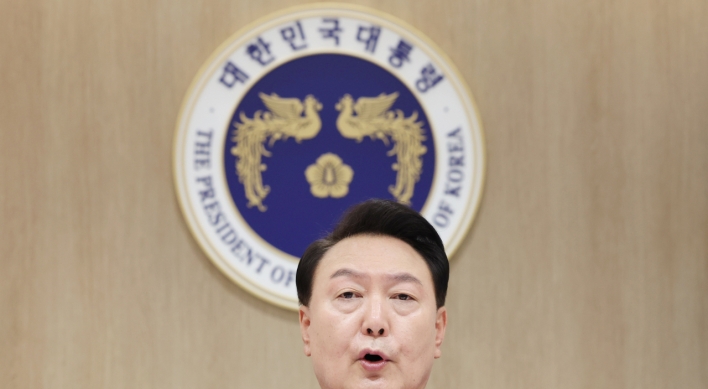[Editorial] Fixing pension crisis
Drastic reforms, realistic projections needed to prevent depletion of state pension fund
By Korea HeraldPublished : Jan. 30, 2023 - 05:30
South Korea’s national pension is on track to be depleted by 2055, unless drastic and painful reforms are taken by the government. The question is whether policymakers can pull off a consensus on this sensitive issue in time.
The National Pension Service (NPS) announced temporary projections about the fund at a press conference Friday at the Ministry of Health and Welfare. The fund is set to swing into deficit starting from 2041, and will be completely drained in 2055, the NPS said. The new figures suggest that problems are deepening at a faster pace than previously projected. In 2018, the NPS expected the fund to post a deficit from 2042 and to be drained in 2057.
The fund operated by the NPS was valued at 915 trillion won ($743 billion) in October last year. As incomes from pension premiums and fund management are set to outpace the total expenditure, the fund is forecast to remain in a surplus until 2040, when it will peak at 1,755 trillion won. But from 2041 its outgoings will be bigger than its income, and the reserve will start to shrink. By the time the fund is depleted in 2055, it will post an annual deficit of 47 trillion won.
To keep the fund from falling to a deficit in 2041 -- one year earlier than the 2018 forecast -- the NPS estimates that it will have to raise the pension rate from the current 9 percent of reported income to a whopping 19.57 percent in 2025 and then to 22.54 percent in 2035.
Given that Korean households are already suffering from surging utility bills, such big raise in the pension contribution rate will place far more burden on current job holders. What's worse is that it is unlikely to be the last hike since other factors affecting the pension system, such as plunging birth rates and fast-paced aging in Korean society, are deteriorating.
The bewildering aspect of the latest NPS projection is that the figures are based on fairly optimistic assumptions about the factors that affect the fund.
The country’s chronic decline in childbirths is a case in point. The Ministry of Health and Welfare projected the total fertility rate -- the average number of children a woman bears in her lifetime -- would drop to 0.70 in 2024 before staging a rebound from 2025, and reach 0.96 in 2030 and 1.21 in 2046.
This forecast is not only very optimistic but has no basis considering the recent data. For instance, Statistics Korea data showed that the number of babies born in November stood at 18,982, down 4.3 percent from a year earlier and a record low for November since 1981. The January-November period also witnessed a 4.7 percent year-on-year drop in the number of new babies.
The country’s total fertility rate shows no sign of a recovery, either. The rate was 0.79 in the third quarter last year and 0.81 in the full year of 2021, failing to rise above one for the fourth year in a row. The rate is far lower than the replacement level of 2.1 to keep the population steady at 51.5 million.
It is not the first time the government has inflated projections for the country’s birth rates. In 2018, it had forecast the total fertility rate would rise to 1.24 for 2020, but the actual figure was 0.84.
The pace of aging would be much faster than the one used for the NPS projections. The NPS expects life expectancy to rise to 90.5 in 2055, and the working-age population, or those aged 15 to 64, to stand at 71.6 percent during the 2023-2030 period. But experts caution that life expectancy will be higher and the working-age population ratio will be lower than the NPS forecasts.
The NPS’ projections for macroeconomic indicators such as inflation and economic growth rate are likely to be different than what plays out in the coming decades, raising the possibility that the fund might be depleted earlier than 2055.
The national pension premiums started with 3 percent in 1988. After two 3 percent hikes, it has stayed at 9 percent since 1998. That the past administrations have failed to raise the rate for 25 years illustrates the difficulty of reaching a consensus on the pension crisis.
Given that a rate hike seems inevitable, the government has to incorporate more realistic scenarios, however pessimistic they may be, into the final NPS projections on the fund, scheduled for March, and consider additional reviews by outside experts to enhance the reliability of the forecast.
-
Articles by Korea Herald












![[KH Explains] How should Korea adjust its trade defenses against Chinese EVs?](http://res.heraldm.com/phpwas/restmb_idxmake.php?idx=644&simg=/content/image/2024/04/15/20240415050562_0.jpg&u=20240415144419)







